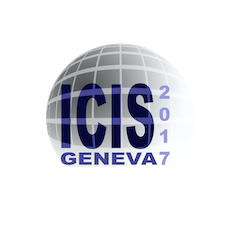Speaker
Description
A 100 keV, negative hydrogen ion based neutral beam system is at the developmental stage in INTF at Institute for Plasma Research (IPR), India. This test facility is used for characterising the large beam source which is to be used in the Diagnostic Neutral Beam (DNB) for ITER. A large number of diagnostics are also at the developmental stage for measuring and monitoring the beam performance. The Doppler Shift Spectroscopy (DSS) diagnostics is a beam emission spectroscopy (BES) system chosen for characterizing the beam by evaluating the beam divergence, stripping losses and the beam uniformity from the observed. INTF beam source is designed to deliver 60 A of negative hydrogen ion current through its 1280 apertures arranged in a 4 x 4 beam groups having each a matrix of 5 × 16 beamlet resulting a beam cross section of 0.6m (h) x 1.6m (v). It is proposed that the beam properties on the entire cross section of the beam can be studied using 36 lines of sight (LOS) at different ports on the vacuum vessel. The LOS are deployed at 12 horizontal from the left side, 12 horizontal from the right side and 12 from the bottom of the vacuum vessel.
In order to design and develop this diagnostic, a forward model for estimating the signal to noise ratio, stripping losses, and beam divergence for all these lines of sights (LOS) at different operating scenarios and instrument settings is developed. The model accounts all the 1280 beamlets and its interaction with the line of sights and predicts the DSS spectrum for each beamlet-LOS interaction volume. Using this forward model, it is found that a viewing angle of 60-degree w.r.t beam axis yields a clearly resolved Doppler shifted spectrum with a signal to noise ratio of ~100 even for low current operations (1 A), maintaining all the interface issues. Studies also indicate that a simple lens–fiber combination and a standard Czerny-Turner spectrograph having a wavelength resolution of 0.03 nm can be used for transporting and detecting the light signal. An endoscopic light collection system is proposed for light collection for obtaining a higher signal to noise ratio under low light conditions, which may help during the initial phase of operation. The expected performance of the diagnostics based on this model is discussed and a brief description of the proposed diagnostics lay out in INTF is also presented.
